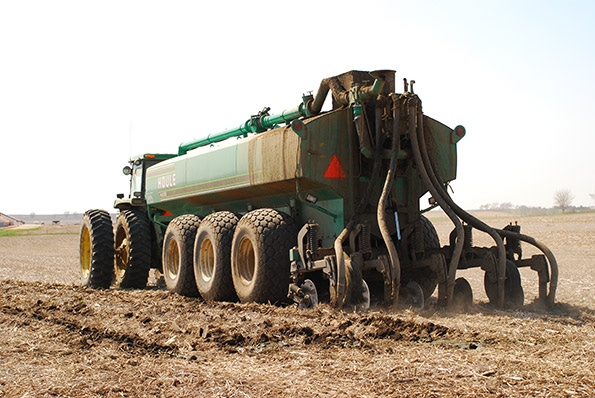Don’t forget your manure nutrient management plans in the haste of bringing in the fall crop and hauling manure onto your fields.
September 14, 2016

Fall harvest has begun in some regions, and it won’t be long before bringing the crop in will be in full force. As soon as crops are coming off the fields, livestock producers will be emptying the manure lagoons and pits of the valuable soil nutrients.
The race to get fall fieldwork done, including manure application, should not allow for producers to abandon their nutrient management plans.
That’s leading the Wisconsin Department of Agriculture, Trade and Consumer Protection to remind farmers to take advantage of the state’s Runoff Risk Advisory Forecast and follow their nutrient management plans.
Sara Walling, water quality section leader with the Wisconsin Department of Agriculture, Trade and Consumer Protection, says, “If the heavy rains we’ve had across most of the state all summer continue into the fall, farmers might have trouble finding that window when they can safely spread manure. But it’s important that they keep an eye on conditions. Manure spills and runoff can damage waterways, and cost farmers both in financial penalties and the loss of nutrients.”
The Runoff Risk Advisory Forecast is part of the online Wisconsin Manure Management System. It provides maps that are updated three times a day to show short-term manure runoff risk, taking into consideration soil moisture, weather forecast, crop cover and slope. Farmers can check it to see how risky it will be to spread manure in their watershed basin.
Along with checking the forecast, farmers who have nutrient management plans should be spreading manure based on the plan. Almost a third of Wisconsin’s 9 million acres of cropland is covered by a nutrient management plan.
“Your nutrient management plan includes all site-specific risk areas on your farm, so it’s really a great tool to be sure you’re putting the right amount of nutrients in the right place, and the advisory forecast tells you the right time,” Walling says. She advises farmers who don’t have a plan to talk to their crop consultant or county conservationist to develop one, and to help with alternatives to spreading in risky conditions such as stacking manure in a safe spot or identifying fields where the runoff risk is lowest.
For information about nutrient management planning, visit DATCP’s website.
In addition, farmers should have an emergency plan in place in case the worst does happen. You can find information about emergency planning on the Wisconsin Department of Natural Resources website. Spills or runoff must be reported immediately by calling 800-943-0003.
Click here to read manure nutrient management information provided by the Pork Checkoff.
You May Also Like



